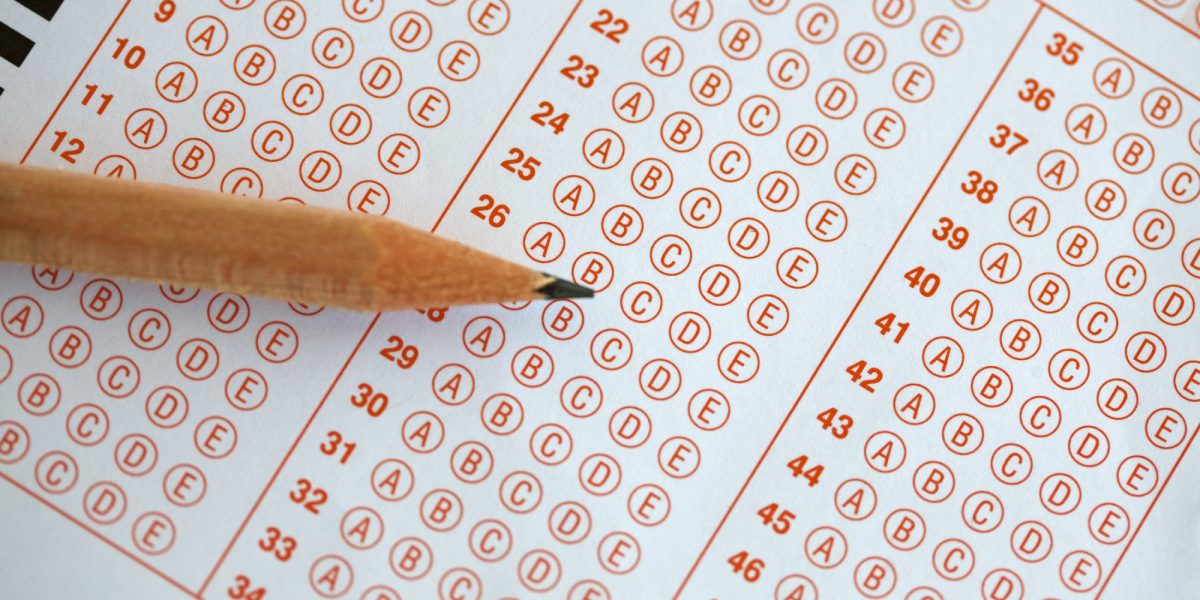What's the best way to approach a multiple-choice test? By choosing the correct one of four answers, of course! In all seriousness, multiple-choice tests can present an intimidating new challenge for students who are more accustomed to traditional test-taking formats. But not to worry! The great thing is—by the very nature of multiple-choice tests—students can use certain strategies to reach the correct answers even when they may have struggled to come up with an answer on their own. After all, one of the four choices presented must be correct; you'll never need to create one out of thin air.
Here are our tips for mastering multiple-choice tests like the ACT and SAT.
Tip #1: Embrace the multiple-choice format.
The differences between multiple-choice tests and “normal” tests are often overstated. Focus on the positives: the test writers are giving you the correct answer! It’s right there on the page. You just need to find it! There are certainly some tricky answer choices that can lead you astray, but overall, the multiple-choice aspect should make the test easier, not harder.
Think about multiple-choice tests this way: the test writers are giving you the correct answer! It's right there on the page. You just need to find it!
Nonetheless, there are several important strategies for multiple-choice tests that students have to be aware of. Ignoring the remaining tips will lead to a score that is well below what a student should score.
Tip #2: If there's no guessing penalty, answer every question.
On the ACT and SAT, there is no guessing penalty. Your score is determined solely by the number of correct answers: the more, the better. Therefore, if you are not able to answer a question, either because it is too difficult or because you don’t have time, you need to randomly select answer choices. Not doing this is the single easiest way to sabotage your own score.
Tip #3: Plug in the answer choices.
The next important technique involves using the answer choices to help you answer a question that you otherwise would not be able to complete. This technique is frequently applied in the Math sections of the ACT and SAT. Let’s look at an example to illustrate this point:
![]()
(A) 0.94
(B) 1.20
(C) 1.36
(D) 1.56
First, I’ll show you the “correct” way to get this question right:
![]()
![]() , and using the calculator for the final step,
, and using the calculator for the final step,
x = 1.5631
However, not all students have studied logs or even know where to get started on a problem like this. If you find yourself in this situation, go directly to the answer choices and plug them in to the question. See if one works. In this case, even if you didn’t know how to solve using logs, you could go through all five answer choices and see which one gave you the desire answer. For example, if I plug in answer choice A, I get
![]() .
.
We’re looking for 1337, not 75.86, so we move on. Doing so repeatedly will show you that of all the answer choices, D gets you very close to your target. (You won’t always get an exact answer due to rounding in the answer choices.)
While this technique isn’t foolproof, it’s much better than simply giving up if you’re not 100% sure how to start.
Tip #4: Use the process of elimination.
Lastly, every student needs to take advantage of the process of elimination. This technique applies to all sections of the ACT, SAT, and AP exams, but it is particularly useful in the Reading sections of the ACT and SAT, the English section of the ACT, and the Writing and Language test of the SAT.
Don’t ask, “Which answer do I agree with?” Ask, “How can I disagree with this answer choice?”
In many cases, the correct answer on a multiple-choice test will be hidden in vague or unremarkable language. Suppose there were a reading passage that discussed how—in the months leading up to the American Revolutionary War—Thomas Jefferson and John Adams wrote the Declaration of Independence together. A correct answer choice to a question about this passage might read:
“In the months preceding a conflict, two prominent men collaborated on a document.”
Notice how the answer choice has substituted vague words for specific people and events. “A conflict” replaced the American Revolutionary War; “two prominent men” replaced Thomas Jefferson and John Adams; “a document” replaced the Declaration of Independence. It’s easy to miss those equivalencies though, and on its face, this answer choice is pretty bland and uninspiring.
If you find yourself in this situation, where you can’t find an answer choice that seems to answer the question, look for reasons to eliminate answer choices. Don’t ask “which answer do I agree with?” Ask “how can I disagree with this answer choice?” Usually, the one that remains at the end—the answer choice that you cannot disagree with—is the correct one.
There are many nuances in applying these techniques to the major standardized tests. But if you are aware of these broad strategies, you’ll ensure that your score on test day is close to your best possible score. Next time you take a practice test, be aware of these, and you should see your score increase.
Need more individualized advice?
The recommendations above are general suggestions. If you have specific questions, reach out to our experts here. We’re happy to help in any way we can.
About ArborBridge
ArborBridge is the global leader in innovative, digital, one-on-one tutoring. With nearly a decade of experience teaching students online, ArborBridge supports students of all kinds: home schoolers, AP students, test preppers, and more. Our tutors specialize in creating personalized plans and in providing compassionate support for students and families.






